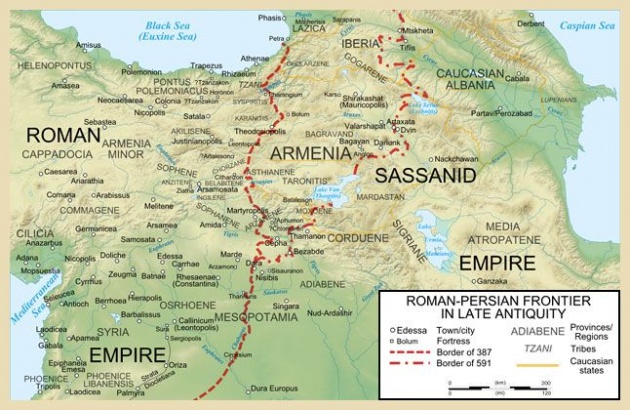For all their differences, the Byzantine and Sasanian Empires shared certain common features and faced similar challenges. Their rulers struggled to unify vast domains and fragmented populations by the use of force, when necessary, and by recourse to a religious ideology that they tried to impose on their subjects, which bolstered their claim to rule. Both, perhaps inadvertently, fostered movements with egalitarian tendencies that used religious ideas to blunt the harshness of existing social norms. Both faced the challenge of warding off external enemies on their frontiers … Above all the two empires faced the challenge of each other. … At stake was not merely Byzantine versus Sasanian political control and economic influence, but also Christianity as opposed to Zoroastrianism and Hellenic as opposed to Iranian cultural traditions.”(Muhammad and the Believers, Fred M. Donner.)
From their capital, Constantinople, the Byzantine emperors of the sixth century envisioned and attempted a Christianized form of the Roman world order. But this dream proved impossible as pagans, Jews, and Samaritans resisted Christianity. Within Christianity itself sharp divisions arose, particularly about the human and/or divine nature of Jesus that set one group against another. Ascetic movements: monasteries, convents, pilgrimages, saint worship, icons, relics and new forms of liturgy affected the religious mood of the Empire and a widespread appeal of apocalyptic ideas predicting the end of days ran rampant.
Zoroastrianism and its sectarian branches, such as Mithraism, was the major religion of the Sasanian Empire. But the population included large communities of Jews, some established in Babylon since the Babylonian Exile in 597 BCE and certainly from the time of the Great Revolt in AD 70, and Christian communities such as Nestorians who had been condemned at the Council of Ephesus in 431 and forced to flee the Byzantine Empire (the Old Roman Empire). In the fourth and fifth centuries much of the western half of the Byzantine Empire was disintegrating, unable to maintain the strength and prosperity of so vast a territory. Though undermined by earthquakes and repeated bouts of plague, the eastern half of the empire remained intact. But by 570 CE, the year of Mohammad’s birth, these two Empires were locked in a series of debilitating wars with each other which would eventually weaken and cause the demise of both.




